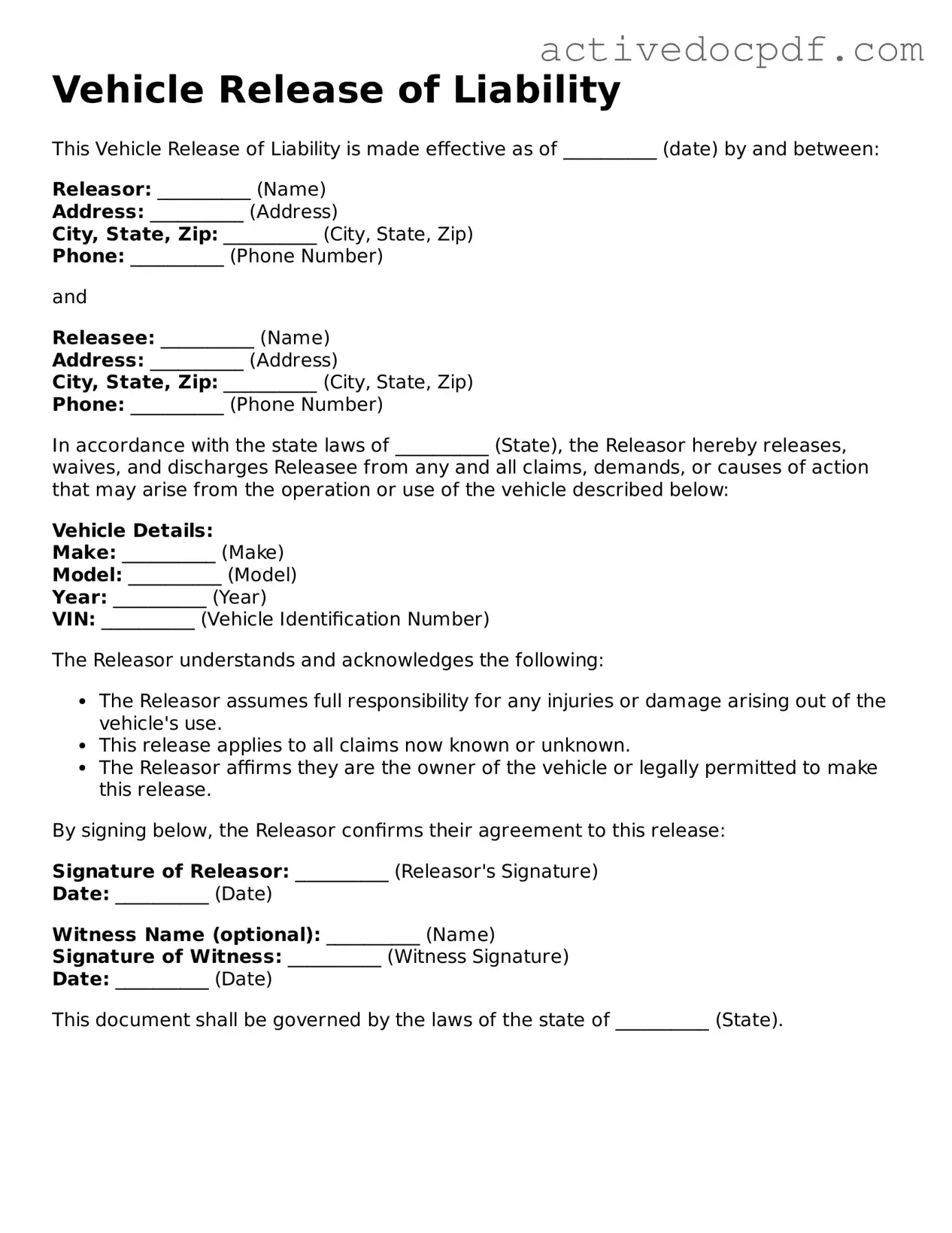Guide to Filling Out Vehicle Release of Liability
Completing the Vehicle Release of Liability form is an important step in transferring responsibility for a vehicle. After filling out the form, it will be necessary to submit it to the appropriate authorities to ensure that the transfer is officially recognized. Follow these steps to accurately complete the form.
- Obtain the Vehicle Release of Liability form from your local Department of Motor Vehicles (DMV) or download it from their website.
- Begin by entering the date at the top of the form.
- Fill in your name and address in the designated fields. Make sure to provide accurate information.
- Next, enter the name and address of the new owner of the vehicle.
- Provide the vehicle's details, including the make, model, year, and Vehicle Identification Number (VIN).
- Indicate the date of the transfer of ownership.
- Sign the form to certify that the information is correct and that you are releasing liability for the vehicle.
- Finally, date your signature to complete the form.
Once the form is filled out, it should be submitted to the DMV or the relevant authority as required. Keeping a copy for your records is also advisable.
